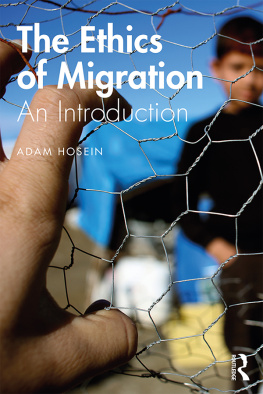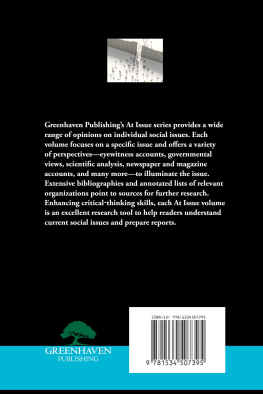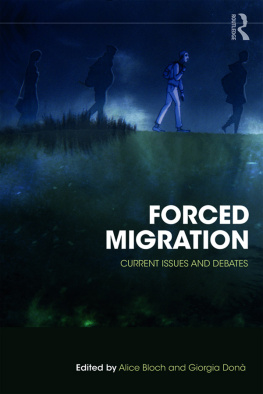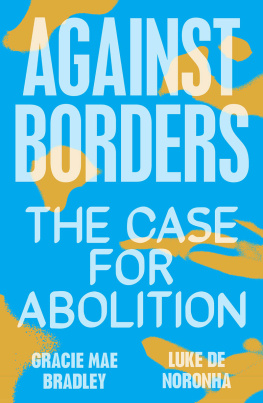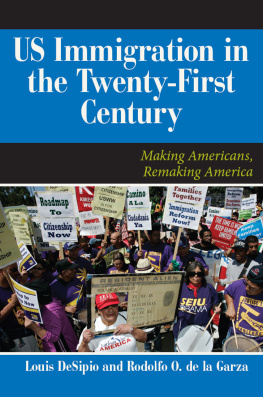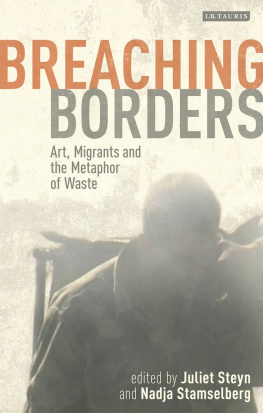Yucatecans in Dallas, Texas
Breaching the Border,
Bridging the Distance
Second Edition
Rachel H. Adler
The College of New Jersey
First published 2008, 2004 by Pearson Education, Inc.
Published 2016 by Routledge
2 Park Square, Milton Park, Abingdon, Oxon OX14 4RN
711 Third Avenue, New York, NY 10017, USA
Routledge is an imprint of the Taylor & Francis Group, an inform a business
Copyright 2008, 2004 Taylor & Francis. All rights reserved.
All rights reserved. No part of this book may be reprinted or reproduced or utilised in any form or by any electronic, mechanical, or other means, now known or hereafter invented, including photocopying and recording, or in any information storage or retrieval system, without permission in writing from the publishers.
Notice:
Product or corporate names may be trademarks or registered trademarks, and are used only for identification and explanation without intent to infringe.
Credits and acknowledgments borrowed from other sources and reproduced, with
permission, in this textbook appear on appropriate page within text.
ISBN: 9780205521029 (pbk)
Library of Congress Cataloging-in-Publication Data
Adler, Rachel H. (Rachel Husin)
Yucatecans in Dallas, Texas: breaching the border, bridging the distance/Rachel H. Adler. 2nd ed.
p. cm. (The new immigrants series)
Includes bibliographical references and index.
ISBN-13: 978-0-205-52102-9
ISBN-10: 0-205-52102-9
1. Mexican AmericansCultural assimilationTexasDallas. 2. Mexican AmericansTexasDallasSocial conditions. 3. ImmigrantsTexasDallasSocial conditions. 4. Assimilation (Sociology)TexasDallas. 5. Dallas (Tex.)Ethnic relations. 6. Dallas (Tex.)Emigration and immigration. 7. Yucatn (Mexico : State)Emigration and Immigration. I. Title.
F394.D219M53 2008
305.89687207642812dc22 | 2007010496 |
In memory of my grandma,
Bernice Spitalny Husin, J.D.
C ontents
T he United States is now in the midst of the largest wave of immigration in the nations history. Recent immigrants from Asia, Latin America, and the Caribbean are changing the American ethnic landscape.
Since the late 1960s, America has, once again, become a country of large-scale immigration, the vast majority coming from Asia, Mexico, Central and South America, and the Caribbean. The number of foreign-born is at an all-time high: an estimated 35 million immigrants were living in the United States in 2005. Although immigrants are a smaller share of the nations population than they were at the beginning of the twentieth century12 percent in 2005 compared to 15 percent in 1910recent immigrants are having an especially dramatic impact because their geographic concentration is so great. Despite the increasing dispersal of immigrants since the 1990s, six statesCalifornia, New York, Florida, Texas, New Jersey, and Illinoisstill accounted for two-thirds of the immigrant population in 2005. Los Angeles, New York, Miami, Chicago, San Francisco, Houston, and Washington, D.C. are, increasingly, immigrant cities with new ethnic mixes. And it is not just Americas major urban centers that are experiencing immigrant inflows. Many smaller cities and towns also have growing immigrant populations.
Who are the new immigrants? What are their lives like here? How are they redefining themselves and their cultures? And how are they contributing to a new and changing America? The New Immigrants Series provides a set of case studies that explores these themes among a variety of groups. The books in the series are written by recognized experts who have done extensive in-depth research on particular immigrant groups. The groups represent a broad range of todays arrivals, coming from a variety of countries and cultures. The studies, based on research done in different parts of the country, cover a wide geographical range, from New York to California.
The books in the series are, first and foremost, ethnographies. All draw on qualitative research that shows what it means to be an immigrant in America today. As part of each study, individual immigrants tell their stories, which helps give a sense of the experiences and problems of the newcomers. Through the case studies, a dynamic picture emerges of the way immigrants are carving out new lives for themselves at the same time as they are creating a new and more diverse America.
Ethnographic case studies provide a depth often lacking in research on immigrants in the United States. Moreover, many of the authors in the New Immigrants Series have done research in the country of origin as well as in the United States. Having field experience at both ends of the migration chain makes ethnographers particularly sensitive to the role of transnational ties that link immigrants to their home societies. First-hand experience of immigrants in their home cultures also enables ethnographers to appreciate continuities as well as changes in the immigrant setting.
Given immigrants important, and ever-growing, presence in American society, it becomes more crucial than ever to learn about their experiences and to hear their voices. The case studies in the New Immigrants Series will help readers understand the cultures and lives of the newest Americans and bring out the complex ways that recent immigrants are coming to terms with and creatively adapting to life in a new land.
NANCY FONER
Series Editor
T his work would not have been possible without the assistance of so many people. First and foremost, I owe an enormous debt of gratitude to all of the people of Kaal, Yucatn. Thank you for sharing your knowledge, thank you for your gracious hospitality, and thank you for your sincere friendship. You have changed my life forever.
I would like to thank the Department of Anthropology, the Friends of Latin American Studies, and the Graduate Student Association of Arizona State University for granting financial support for this research. Thanks are also in order for Delta Publishing Company for sending me ESL materials to use with the Yucatecos. I am grateful to the College of New Jersey (TCNJ), for generously funding the manuscript preparation of the first edition and data collection for the second edition. I would like to thank all my colleagues in the Department of Sociology and Anthropology at TCNJ for all of their encouragement and confidence in me.
Awarm thank you to Caroline Brettell, who so wisely suggested that I submit this manuscript to the New Immigrants series, and to the rest of my dissertation committee, Robert Alvarez and John Martin. I am indebted to my mentor, John Chance, whose wisdom, dedication, and kindness will always inspire me. Many other friends and colleagues contributed to this work by giving feedback, advice, and/or by supporting me in this endeavor and I appreciate their assistance: Carol Adler; David Adler; Grace Bascope; Sandra Bever; Anthony Call; Leo Chavez; Tim Clydesdale; Armin Ek-Yeh; Anne Goldberg; Michael Kearney; Ian Mast; Michelle Moran-Taylor; Stephen Perkins; Debra Rodman; Tamar Diana Wilson; and Paul Zoltan. I am especially grateful to Nancy Foner for her spectacular job editing this book. I would be remiss if I failed to mention Carol and David Adler, my parents (and biggest fans), and their invaluable help with both editions. Thank you guys for standing by me through thick and thin. Finally, I would like to thank my husband, Armin, my daughter, Illana Helen, and my stepchildren Austin, Chris, and Melissa for putting up with me when I am engrossed in my work. I love you all.


